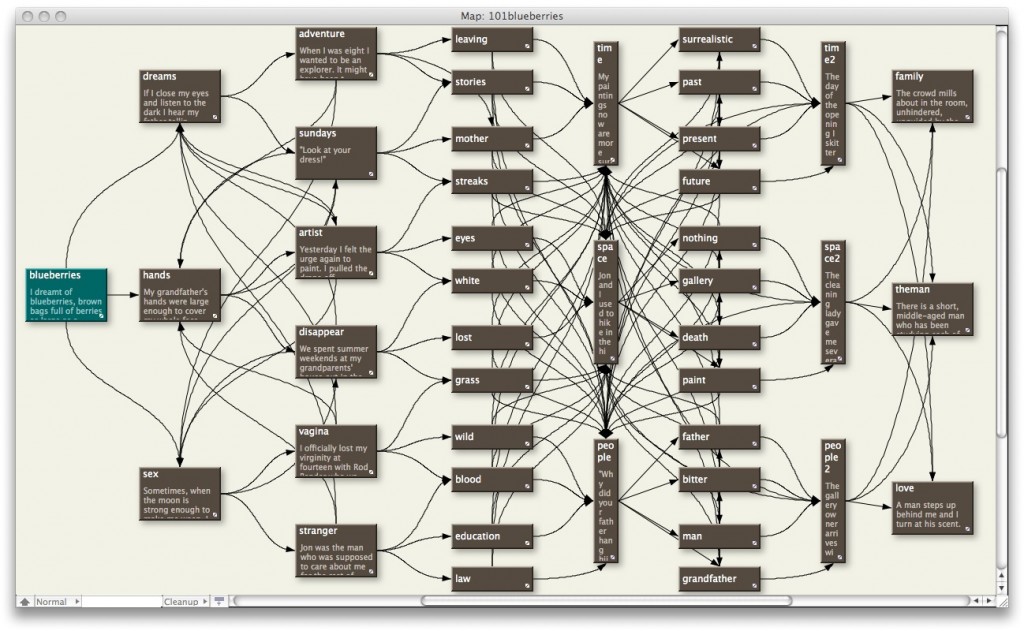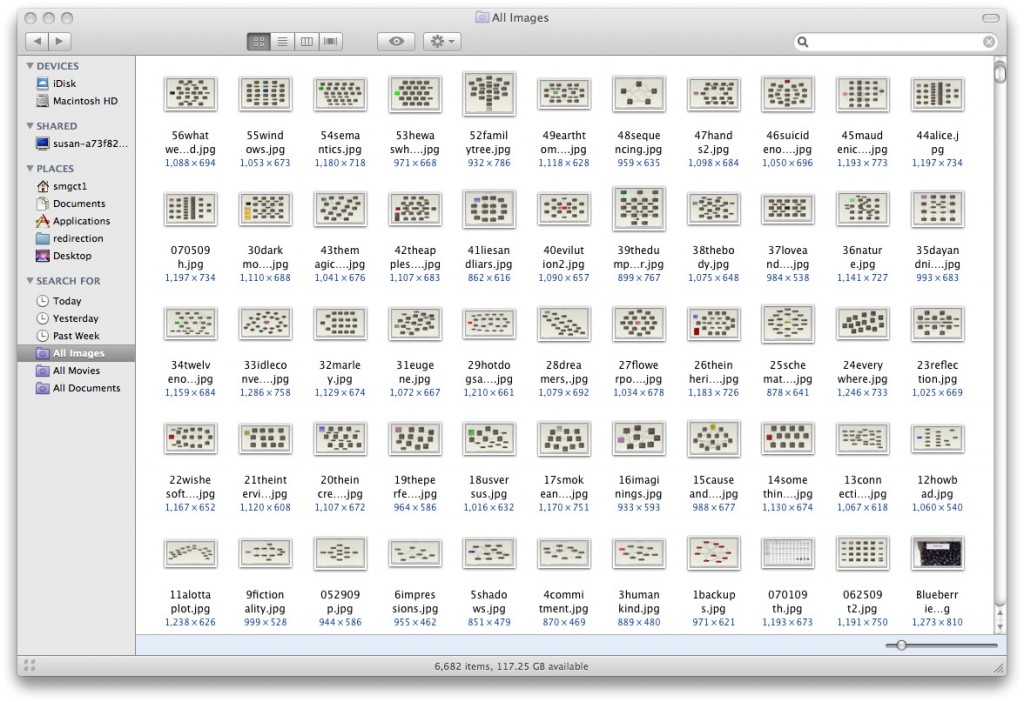The Creative Process: A Blend of Skills (10/01/09, Tunxis CC)
Tonight we’re talking about the creative process in its aesthetic sense. But we use the process of creative thought pattern in solving problems or forming opinions. It’s the same manipulation of valuable experience and imagination that brings it beyond the known into an area that is yet to be discovered.
Writing a story involves more than words. Each form of artistic expression has its own set of technical tools. In art, it’s paint and canvas and a brush. In photography at the very least, a camera and film. In writing, it used to be parchment and quill. Now it’s a computer. With the internet, we’ve semi-eliminated the need for galleries, darkrooms, and publishers.
I’ve had poems published. I’ve been editor of three magazines and publisher of two of them. What I’m seeing now is a move of the medium of writing into web form. Literary journals are making themselves available online either in part or in entirety. Writing story has expanded into games, animation, flash, and my favorite right now, hypertext.

You’re using hypertext every day online when you click on highlighted text that will bring you to another web page. Hypertext story works the same way. For the reader, it allows freedom to explore a story. For a writer, it allows freedom to prepare and present the characters and story in a new way; different from the concept of backstory or foreshadowing, or the dreaded ‘infodump’.
Another exciting bonus of hypertext is that you don’t have to guide the story to only one possible ending. All those “what ifs” can be followed on through. This opens the story up for the reader–though it’s a pretty blind choice–and opens the imagination up for the writer. And the funnest part, using the software to prepare the story mapping and the export of the story into html format for accessibility on the internet. This is the tool.
It’s hard to express the creative process as a muse or inspiration when you’re working with a 24-hour deadline. In this project, Steve started each day off with a short story. I’d usually get an idea from the first quick reading, then I’d maybe read it a couple more times. Sometimes the piece was so complete, so perfectly “done” that it was hard to follow it out into different areas of my own.
But something always stood out for me, whether it was the genre, the character, the pov, the concept, there was always something to play around with. For example, I’ve practiced the skill of focusing on dialogue alone for pace, drama, arc, character to get away from the “telling” of story and making it more of an interpretive offering. Particularly in hypertext, there’s no sense laying out choices of paths if the writer insists on creating the entire storyworld down to the length of the drapes.
There’s often a point in writing when you get stuck, don’t know where the story is going. With me, I never know. Some people have the whole narrative in mind, may even outline the narrative before writing a word. That’s just not my way. I could say that I listen to a voice telling me what to write but the muse doesn’t really exist. Usually I start with an opening sentence or paragraph and keep typing till I run out of that thought. I’ll end up rereading the story several times from the beginning to get my bearings and often that kick-starts some new bout of writing. It’s really not waiting for inspiration, but rather the questioning by the writer of what’s next, what’s around the corner, up the street, under the bed.
I recently posted in my weblog about the responsibility of the writer to guide the reader through a narrative, saying “If you promise sex, you can’t drop the reader into dinner at Grandma’s house.” Mark Bernstein, creator of Tinderbox, answered, “That’s exactly what a writer does.” He’s right in acknowledging the element of surprise and the unexpected that is a vital part of drama. Hypertext again is the perfect vehicle.
One of the great things about writing in hypertext form is the creative process doesn’t stop when the words do. There’s loads to do to keep one from wandering off to go bake cookies or clean the house. You can play with the maps. You can tinker with the colors that you’ll present the story in. You can photoshop images to throw in. You are remaining in the setting and before you know it, the story is happening again.
Here’s a screenshot of the Tinderbox software program that I write into:

The html export template that enables it to be accessed online, and the css that tells it what to look like:


This is the technical end of the creative process of hypertext story writing. From this point, when the story is finished, it gets more technical.
With the 100 Days project, I had time to get some color themes established into css stylesheets ready to choose for the stories. The colors were a part of the story. And so it comes out looking like this example:

In other words, the genre, the topic, the theme of the story was enhanced by the colors. Black and red for mystery; bright and bold for sci fi; toned down for drama, etc. Images further added to the possibilities of telling the story.
In my latest work, a hypertext called Blueberries, I took a photo of grapes I’d just picked and stuck in a paper bag, Photoshopped them to look like blueberries, made four copies of the final image gradually lightening each to the last an almost white, and used them on certain pages as a background. In the story, the artist begins to lose her grip on reality. As the story progresses towards the end(s) the images used are lighter and lighter.



Many authors such as William Blake used drawings and illumination in his work. It’s part of the creative process. It attracts and it holds the reader’s interest even as it may serve as the “picture [that] is worth a thousand words.” How different is this from new media online that mixes text with graphics and sound?
Through the summer I wrote 100 hypertext stories. Rewriting, tweaking down to the exactly right words is as big a part of the creative process as using the crash dummies for designing cars. When you’re on a tight deadline you might put something out there that’s not quite a finished product. In this project of getting a story online, I have three separate areas where the story is present in different forms. There’s the original writing in the Tinderbox program, there’s the html export templates on my hard drive, and there are those same templates uploaded to my website. This means that when I get back to tweaking, changes need to be made in all three places. That dims the fun a bit.


The urge to create is answered in different ways. Mary Ellen Molski, who did character studies or written portraits, told me she used Steve’s stories as a springboard for a theme, but let the characters develop on their own. She asked who would face the situation and how would they deal with it. Names were her biggest challenge and she admitted to trolling through the obituaries. She agrees that life experience was intertwined with creation. And this I found extremely interesting, she said she always thought if you wanted to write about an experience you just would, instead of seeing how it filters in on its own daily.
But that’s how it works. Things you don’t even know that you know find their way into our stories. Observations stored and quickly forgotten are dragged out and slapped into shape. That’s the surprise you find when you read your work later and you make the connection. Sometimes it’s hidden in metaphor that you brilliantly–or unconsciously–but brilliantly will acknowledge only in a later discovery.
Something that I’ll carry with me out of this project is that deadlines can be met–though sometimes stretched a tad–with work that becomes increasingly of higher quality out of the experience of writing. While I’m sure I stuck some not great stories in there that I’ll spend the winter rewriting, some of my best work has come out of this. Better still, it’s established a routine of writing. I’ve also gained a pattern of reading, viewing, absorbing the work of others in a quick but thorough manner that might inspire further images.
What sparks the imagination? Sometimes an experience that’s been in our minds for a while. Sometimes a wild idea about how wonderful life could be for everyone if I were queen of the world. Sometimes a certain time of day, a certain light falling on a blank screen or canvas, a freshly sharpened pencil or a freshly cut rose in a crystal bud vase. Sometimes it’s a deadline and others working towards the same goal.
So what’s the kickoff to my creative process now? A cup of coffee, my laptop, and an opening line. Thank you.

 The Lost Children: A Charity Anthology
The Lost Children: A Charity Anthology